In the competitive landscape of compact SUVs, two models stand out for their unique characteristics and innovations: the Suzuki Vitara and the Toyota C-HR. Both vehicles appeal to a diverse range of buyers seeking style, efficiency, and practicality, yet they deliver these qualities in distinctly different ways. In this comparison, we'll delve into their technical specifications, performances, and innovations to help you make an informed choice.
Suzuki Vitara vs Toyota C-HR – Performance, range & efficiency compared
Design and Dimensions
The Suzuki Vitara boasts a robust and rugged SUV design, measuring 4185 mm in length, 1775 mm in width, and 1595 mm in height, making it relatively compact and maneuverable. In contrast, the Toyota C-HR presents a more futuristic and edgy aesthetic. The C-HR's dimensions are slightly larger, with a length of 4362 mm and a width of 1832 mm, but it stands lower at 1558 mm, emphasizing its sporty coupe-like appearance.
Powertrains and Performance
When it comes to powertrains, the Suzuki Vitara provides options of a petrol MHEV (mild hybrid) and a full hybrid, with horsepower outputs ranging from 116 to 129 HP. The vehicle is available with either a manual or automatic transmission, paired with front-wheel drive or all-wheel drive configurations. Acceleration from 0-100 km/h takes between 9.5 and 12.7 seconds, depending on the variant chosen.
On the other hand, the Toyota C-HR shines with a more powerful lineup, featuring a full hybrid and a plug-in hybrid option. The power output can reach as high as 223 HP, depending on the model and engine configuration. Its acceleration is impressive, with some variants achieving 0-100 km/h in as little as 7.4 seconds. All C-HR models come with an automatic CVT transmission, emphasizing smooth and efficient power delivery.
Fuel Efficiency
Fuel efficiency is a significant consideration for many buyers, and here, the Suzuki Vitara holds its ground. With consumption figures between 5.0 to 5.6 L/100km, it remains competitive. Moreover, its carbon emissions are relatively low, ranging from 113 to 129 g/km.
In comparison, the Toyota C-HR excels with an even more remarkable fuel efficiency, especially in its hybrid configurations, achieving consumption as low as 4.7 L/100km, with some plug-in models posting ultra-low emissions of just 17 g/km. The C-HR's electric range of up to 68 km gives it an edge for urban driving suitability.
Interior and Technology
Both SUVs have been designed to provide a comfortable and practical interior space. The Suzuki Vitara offers ample trunk capacity of 375 L, making it versatile for everyday use. It also features straightforward infotainment options, though some may find it less advanced than competitors.
The Toyota C-HR, on the other hand, takes the lead in technology and interior quality, boasting a trunk capacity ranging from 350 to 447 L depending on the variant. Its interior features modern design elements, a larger touchscreen infotainment system, and advanced connectivity options, offering a superior tech-savvy experience.
Safety and Reliability
Both vehicles are equipped with essential safety features. The Suzuki Vitara features various active and passive safety measures, contributing to its reliable reputation. However, it may not offer as many advanced driver-assistance systems as its competitors.
The Toyota C-HR includes Toyota's Safety Sense package, which encompasses advanced safety technologies such as adaptive cruise control, lane departure warning, and pre-collision systems, enhancing its profile as a family-friendly SUV.
Conclusion: Which SUV is Right for You?
Choosing between the Suzuki Vitara and the Toyota C-HR ultimately depends on your personal preferences and driving needs. If you value efficiency and cutting-edge technology, the C-HR presents a compelling option with its strong hybrid performance and modern features.
Conversely, if you're looking for a more rugged SUV that offers good performance and practicality, the Suzuki Vitara stands as a solid, reliable choice. Both vehicles represent excellent additions to the compact SUV market, making them worthy contenders in their class.
Here’s where it gets real: The technical differences in detail
Costs and Efficiency:
When it comes to price and running costs, the biggest differences usually appear. This is often where you see which car fits your budget better in the long run.
Suzuki Vitara has a evident advantage in terms of price – it starts at 23600 £, while the Toyota C-HR costs 29100 £. That’s a price difference of around 5563 £.
Fuel consumption also shows a difference: Toyota C-HR manages with 0.80 L and is therefore clearly more efficient than the Suzuki Vitara with 5 L. The difference is about 4.20 L per 100 km.
Engine and Performance:
Power, torque and acceleration are the classic benchmarks for car enthusiasts – and here, some clear differences start to show.
When it comes to engine power, the Toyota C-HR has a decisively edge – offering 223 HP compared to 129 HP. That’s roughly 94 HP more horsepower.
In acceleration from 0 to 100 km/h, the Toyota C-HR is noticeable quicker – completing the sprint in 7.40 s, while the Suzuki Vitara takes 9.50 s. That’s about 2.10 s faster.
In terms of top speed, the Suzuki Vitara performs slight better – reaching 190 km/h, while the Toyota C-HR tops out at 180 km/h. The difference is around 10 km/h.
Space and Everyday Use:
Beyond pure performance, interior space and usability matter most in daily life. This is where you see which car is more practical and versatile.
Both vehicles offer seating for 5 people.
In curb weight, Suzuki Vitara is a bit lighter – 1255 kg compared to 1505 kg. The difference is around 250 kg.
In terms of boot space, the Toyota C-HR offers a bit more room – 447 L compared to 375 L. That’s a difference of about 72 L.
In maximum load capacity, the Toyota C-HR performs hardly perceptible better – up to 1155 L, which is about 35 L more than the Suzuki Vitara.
When it comes to payload, Toyota C-HR hardly perceptible takes the win – 425 kg compared to 400 kg. That’s a difference of about 25 kg.
Who wins the race?
The Toyota C-HR proves to be outperforms in nearly all aspects and therefore becomes our DriveDuel Champion!
Toyota C-HR is the better all-rounder in this comparison.
Costs and Consumption
View detailed analysis
Engine and Performance
View detailed analysis
Dimensions and Body
View detailed analysis
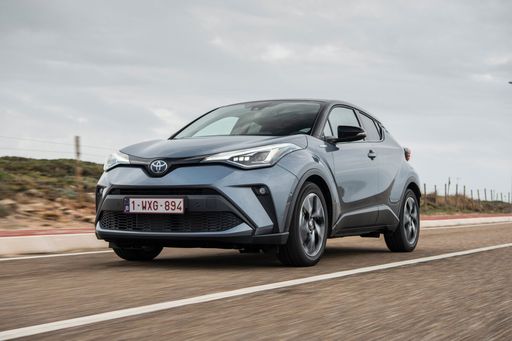 @ Toyota Motor Corporation
@ Toyota Motor Corporation
Toyota C-HR
Suzuki Vitara
The Vitara is a city-smart SUV with a cheeky streak of off-road promise, perfect for drivers who want practicality without pretense. It’s honest, easy to live with and surprisingly likeable, a sensible companion for everyday adventures and weekend escapes.
details @ Suzuki Motor Corporation
@ Suzuki Motor Corporation
 @ Suzuki Motor Corporation
@ Suzuki Motor Corporation
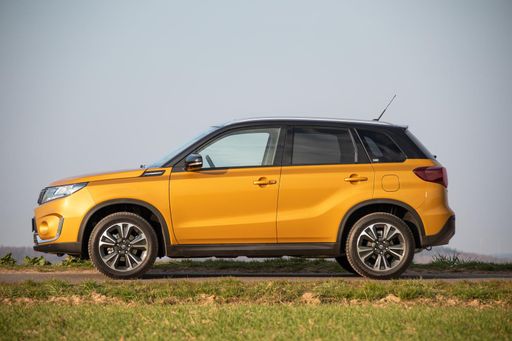 @ Suzuki Motor Corporation
@ Suzuki Motor Corporation
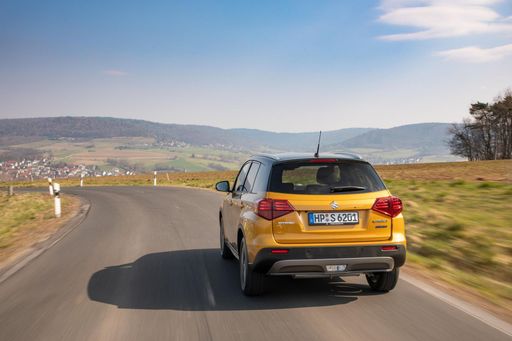 @ Suzuki Motor Corporation
@ Suzuki Motor Corporation
 @ Suzuki Motor Corporation
@ Suzuki Motor Corporation
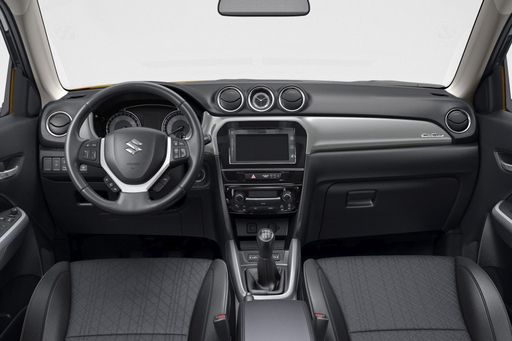 @ Suzuki Motor Corporation
@ Suzuki Motor Corporation
Toyota C-HR
The Toyota C-HR cuts a striking figure with its angular styling and coupe-like profile, so you’ll never go unnoticed in the supermarket car park. It balances everyday practicality with a nimble, city-friendly personality, making routine commutes feel a touch more fun without asking for forgiveness.
details @ Toyota Motor Corporation
@ Toyota Motor Corporation
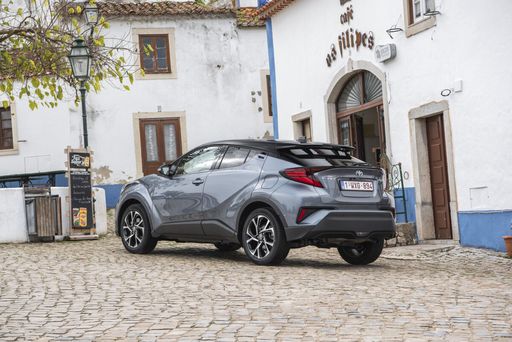 @ Toyota Motor Corporation
@ Toyota Motor Corporation
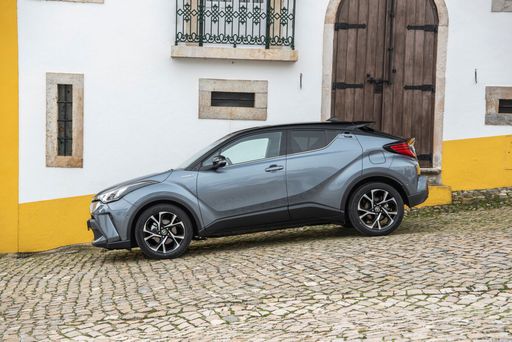 @ Toyota Motor Corporation
@ Toyota Motor Corporation
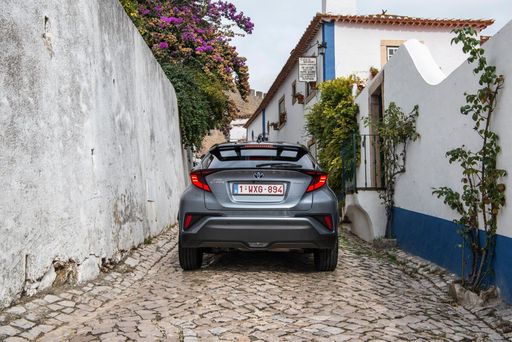 @ Toyota Motor Corporation
@ Toyota Motor Corporation
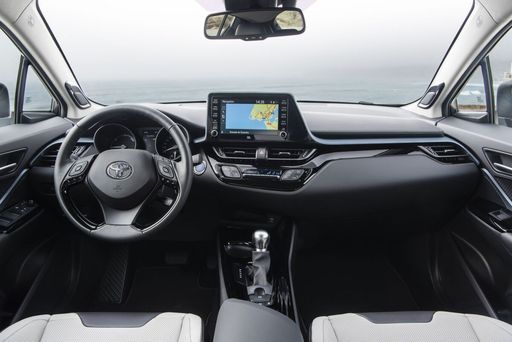 @ Toyota Motor Corporation
@ Toyota Motor Corporation
 @ Suzuki Motor Corporation
@ Suzuki Motor Corporation
|
 @ Toyota Motor Corporation
@ Toyota Motor Corporation
|
|
|
|
Costs and Consumption |
|
|---|---|
|
Price
23600 - 30900 £
|
Price
29100 - 42800 £
|
|
Consumption L/100km
5 - 5.9 L
|
Consumption L/100km
0.8 - 5.1 L
|
|
Consumption kWh/100km
-
|
Consumption kWh/100km
-
|
|
Electric Range
-
|
Electric Range
68 km
|
|
Battery Capacity
-
|
Battery Capacity
-
|
|
co2
113 - 138 g/km
|
co2
17 - 115 g/km
|
|
Fuel tank capacity
47 L
|
Fuel tank capacity
43 L
|
Dimensions and Body |
|
|---|---|
|
Body Type
SUV
|
Body Type
SUV
|
|
Seats
5
|
Seats
5
|
|
Doors
5
|
Doors
5
|
|
Curb weight
1255 - 1395 kg
|
Curb weight
1505 - 1755 kg
|
|
Trunk capacity
289 - 375 L
|
Trunk capacity
350 - 447 L
|
|
Length
4185 mm
|
Length
4362 mm
|
|
Width
1775 mm
|
Width
1832 mm
|
|
Height
1595 mm
|
Height
1558 - 1564 mm
|
|
Max trunk capacity
1046 - 1120 L
|
Max trunk capacity
1076 - 1155 L
|
|
Payload
375 - 400 kg
|
Payload
375 - 425 kg
|
Engine and Performance |
|
|---|---|
|
Engine Type
Petrol MHEV, Full Hybrid
|
Engine Type
Full Hybrid, Plugin Hybrid
|
|
Transmission
Manuel, Automatic
|
Transmission
Automatic
|
|
Transmission Detail
Manual Gearbox, Automated Manual, Automatic Gearbox
|
Transmission Detail
CVT
|
|
Drive Type
Front-Wheel Drive, All-Wheel Drive
|
Drive Type
Front-Wheel Drive, All-Wheel Drive
|
|
Power HP
110 - 129 HP
|
Power HP
140 - 223 HP
|
|
Acceleration 0-100km/h
9.5 - 12.7 s
|
Acceleration 0-100km/h
7.4 - 9.9 s
|
|
Max Speed
180 - 190 km/h
|
Max Speed
175 - 180 km/h
|
|
Torque
235 Nm
|
Torque
-
|
|
Number of Cylinders
4
|
Number of Cylinders
4
|
|
Power kW
81 - 95 kW
|
Power kW
103 - 164 kW
|
|
Engine capacity
1373 - 1462 cm3
|
Engine capacity
1798 - 1987 cm3
|
General |
|
|---|---|
|
Model Year
2024 - 2025
|
Model Year
2024 - 2025
|
|
CO2 Efficiency Class
D, C, E
|
CO2 Efficiency Class
C, B
|
|
Brand
Suzuki
|
Brand
Toyota
|
What drivetrain options does the Suzuki Vitara have?
Available configurations include Front-Wheel Drive or All-Wheel Drive.
The prices and data displayed are estimates based on German list prices and may vary by country. This information is not legally binding.
